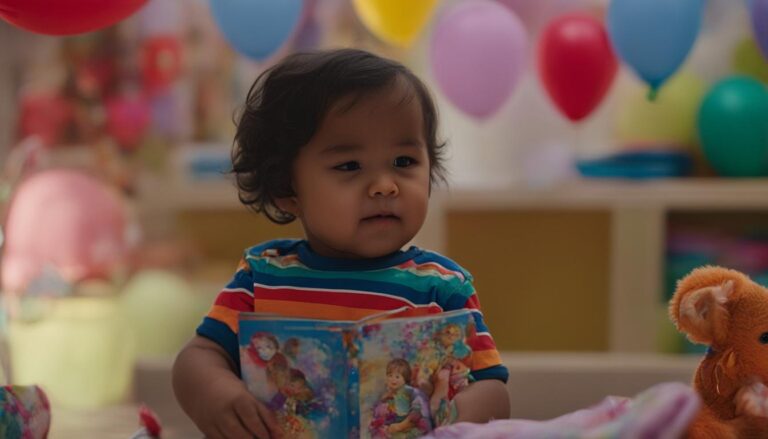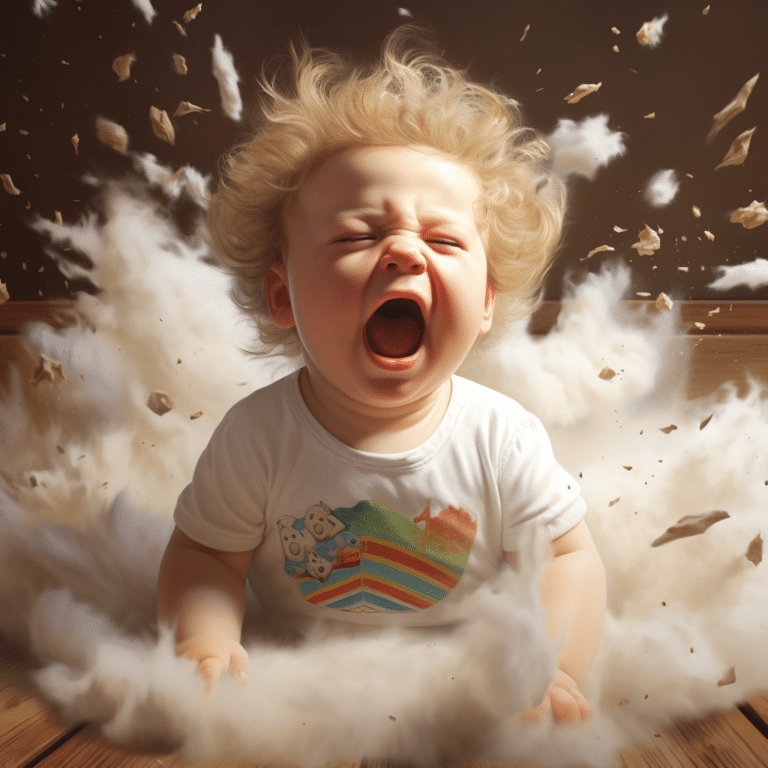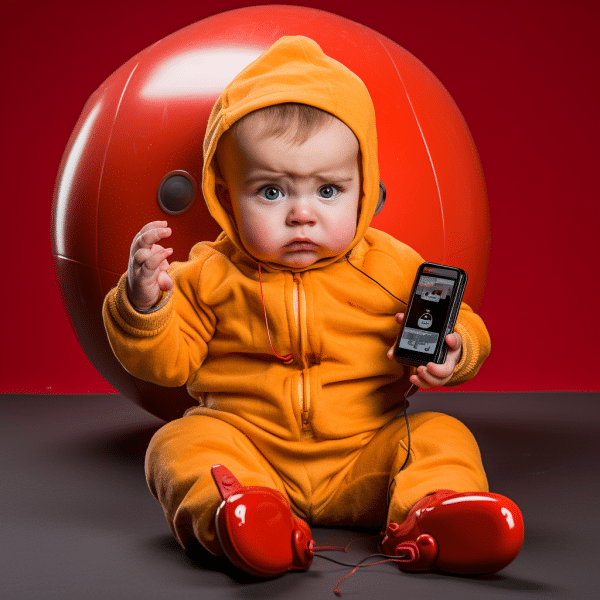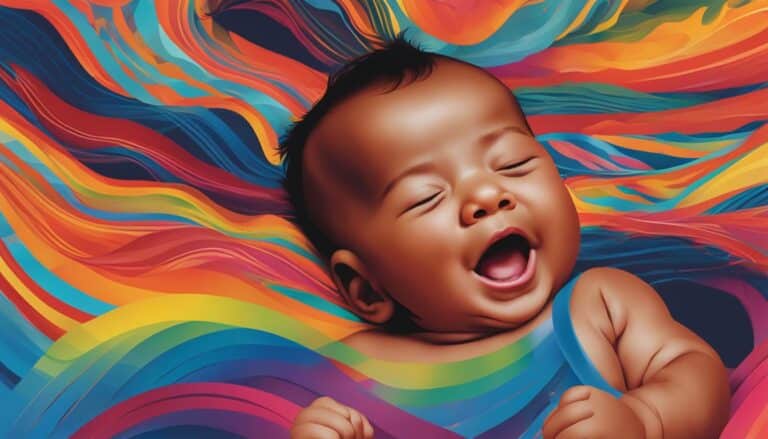Choosing the Best Baby Gear: A Buyer’s Guide
When it comes to buying baby gear for your little one, it’s important to make informed choices. This comprehensive buyer’s guide will help you navigate the world of baby gear and choose the best products for your baby’s safety and comfort. We have compiled a list of must-have items based on our own experience and recommendations from other parents. From nursery furniture to feeding gear and baby safety essentials, we cover all the bases to ensure you have everything you need for your new arrival.
Key Takeaways
- Make informed choices when buying baby gear for your little one.
- Consult recommendations from other parents and experts.
- Ensure your baby’s safety and comfort with the right products.
- Cover all the essential areas, including nursery furniture, feeding gear, and baby safety essentials.
- Modify the list to suit your personal preferences and needs.
Nursery Furniture and Gear
Setting up a nursery for your baby is an exciting time, but it can also be overwhelming with so many options available. In this section, I will guide you through the essential nursery furniture and gear you need for your little one. Let’s start with the basics:
Crib
The crib is the centerpiece of the nursery, providing a safe and comfortable sleeping space for your baby. Look for a crib that meets the safety standards and has adjustable mattress heights to accommodate your baby’s growth. Consider features like teething rails and convertibility to make the crib more versatile for the long run.
Changing Table
A changing table will make diaper changes easier and more organized. Choose a sturdy table with safety straps to secure your baby during diaper changes. Look for one with ample storage space for diapers, wipes, and other essentials to keep everything within reach.
Bassinet
A bassinet is a smaller, cozier sleeping space for your baby during the first few months. It provides a sense of security and proximity to the parent. Look for a bassinet with a firm mattress, breathable sides, and a sturdy base. With a bassinet, you can easily keep your baby close by, whether it’s in your bedroom at night or in the living room during naps.
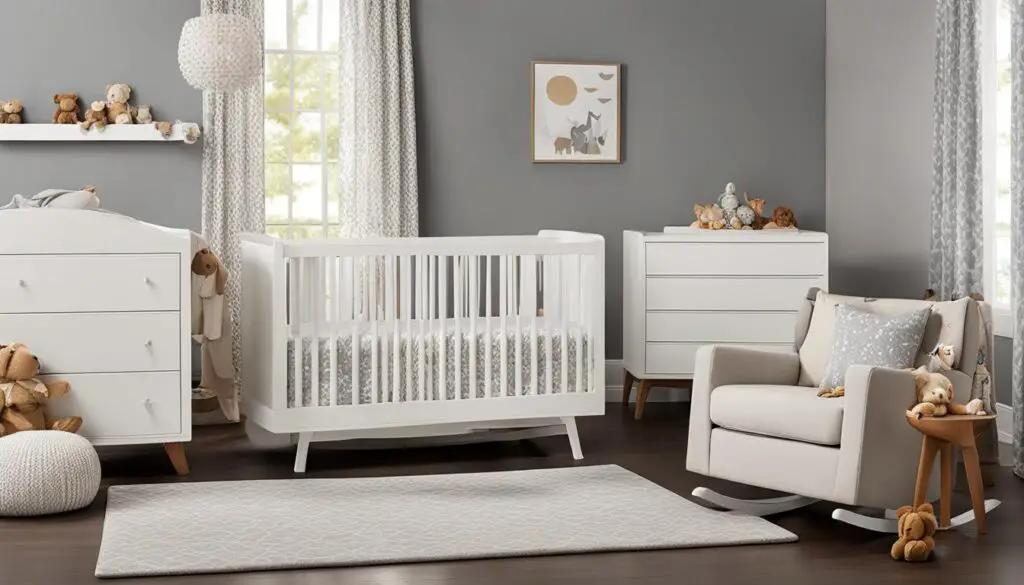
Rocking Chair
A rocking chair is a must-have for those late-night feedings and soothing sessions. Look for a comfortable chair with supportive armrests and a smooth rocking motion. Consider ones with padded cushions and a reclining feature for added comfort.
Humidifier
A humidifier can help maintain a comfortable moisture level in the nursery, especially during dry seasons or when your baby has congestion. Look for a humidifier that is easy to clean, has adjustable settings, and features a quiet operation.
Dresser/Chest
A dresser or chest of drawers will provide ample storage space for your baby’s clothing, blankets, and other essentials. Look for one with sturdy construction, smooth drawer operation, and a design that matches the nursery decor.
Baby Monitor
A baby monitor will give you peace of mind by allowing you to keep an eye on your baby from another room. Consider a video monitor that provides both audio and visual monitoring. Look for features like night vision, two-way communication, and remote pan and tilt for added convenience.
By investing in quality nursery furniture and gear, you can create a safe and comfortable space for your baby to grow and thrive. Remember to always prioritize safety when choosing these items and follow the manufacturer’s instructions for assembly and use.
Feeding Gear
Feeding your baby is a special bonding time and ensuring you have the right gear can make the process much smoother. In this section, we will explore the essential feeding gear that every parent needs to have. From bottles to bibs and high chairs, we have you covered. Let’s dive in!
Bottles and Accessories
When it comes to bottles, there are many options available in the market. It’s important to choose bottles that are safe, easy to clean, and can accommodate your baby’s growing needs. Consider factors like nipple flow rate and material. Some popular bottle brands include Avent, Dr. Brown’s, and Tommee Tippee. Don’t forget to invest in a bottle-cleaning brush and a bottle-drying rack to ensure proper hygiene for your baby.
Baby Formula and Feeding Accessories
If you’re not breastfeeding, baby formula becomes an important part of your feeding routine. It’s crucial to choose the right formula for your baby’s nutritional needs. Consult with your pediatrician before making a decision. Additionally, stock up on bibs and burp cloths to tackle the inevitable spills and messes that come with feeding. These items will help keep your baby clean and comfortable during mealtime.
High Chairs
As your baby starts transitioning to solid foods, a high chair becomes an essential piece of feeding gear. Look for a sturdy and adjustable high chair that can accommodate your growing baby. Safety features like harnesses and easy-to-clean materials are also important considerations. Some popular high chair brands include Graco, Ingenuity, and Fisher-Price. Create a cozy and enjoyable mealtime experience for your little one with a comfortable high chair.
| Feeding Gear | Recommended Brands |
|---|---|
| Bottles | Avent, Dr. Brown’s, Tommee Tippee |
| Bottle-cleaning Brush | Any |
| Bottle-drying Rack | Any |
| Baby Formula | Consult with Pediatrician |
| Bibs and Burp Cloths | Any |
| High Chair | Graco, Ingenuity, Fisher-Price |
Baby Safety Essentials
When it comes to the safety of your baby, it’s essential to have the right gear in place to protect them from potential hazards. From gates and latches to outlet covers and corner guards, there are several baby safety essentials that every parent should consider. In this section, I will highlight some of the must-have safety items and provide useful tips on how to make your home a safe haven for your little one.
Gates and Latches
One of the first steps in babyproofing your home is installing gates at the top and bottom of staircases, as well as any other areas that need to be restricted. These gates act as barriers, preventing your baby from accessing potentially dangerous areas. Additionally, cabinet and drawer latches are crucial for keeping curious little hands away from hazardous substances and sharp objects. Make sure to choose latches that are easy for adults to operate but secure enough to withstand a child’s attempts to open them.
Outlet Covers and Furniture Anchors
Electrical outlets can be a significant safety concern for babies who love to explore by sticking their fingers or objects into them. To prevent accidents, use outlet covers that block access to the outlets. It’s also important to secure any heavy furniture, such as bookshelves or dressers, to the wall using furniture anchors. This additional stability prevents tipping, which can be a serious hazard for curious climbers.
Toilet Lock, Corner Guards, and Fireplace Bumper
As your baby starts to become more mobile, it’s crucial to take extra precautions. Install a toilet lock to prevent access to the toilet bowl, which can be a drowning hazard. Corner guards are essential for protecting your baby from sharp edges on furniture and countertops. Lastly, if you have a fireplace, consider using a fireplace bumper to create a soft barrier between your baby and the hearth. This will minimize the risk of burns or injuries.
| Safety Essential | Description |
|---|---|
| Gates and Latches | Install gates at staircases and use latches on cabinets and drawers to restrict access. |
| Outlet Covers | Block access to electrical outlets using covers to prevent accidental shocks. |
| Furniture Anchors | Secure heavy furniture to the wall to prevent tipping and accidents. |
| Toilet Lock | Use a lock to prevent access to the toilet bowl, reducing the risk of drowning. |
| Corner Guards | Protect your baby from sharp edges on furniture and countertops with corner guards. |
| Fireplace Bumper | Create a soft barrier between your baby and the fireplace to prevent burns or injuries. |
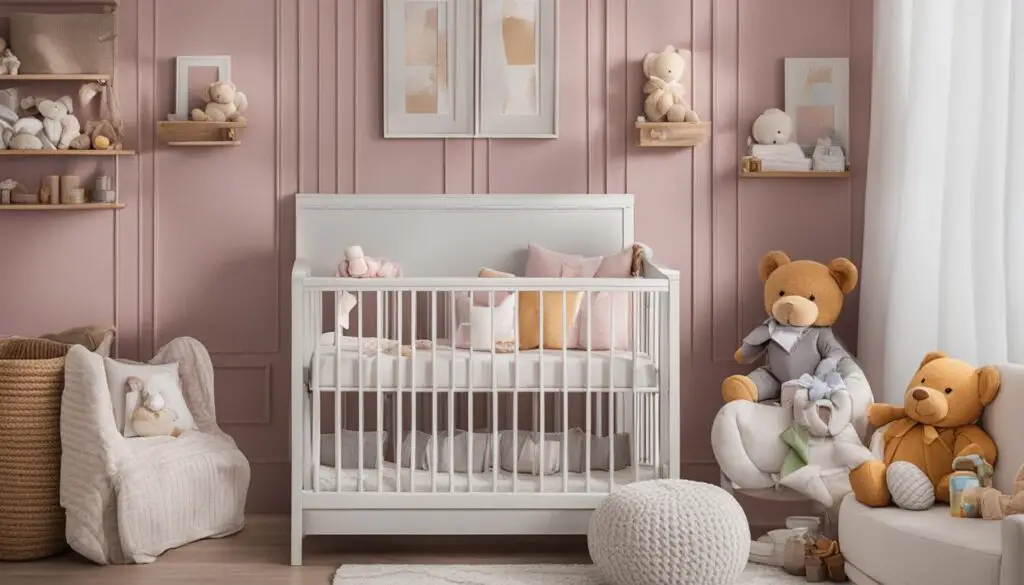
Remember, baby safety should always be a top priority. By investing in the right gear and taking the necessary precautions, you can create a safe environment for your little one to explore and grow.
Conclusion
As a new parent, navigating the world of baby gear can be overwhelming. But fear not, this comprehensive buyer’s guide has got you covered. I have provided you with a list of must-have baby gear items that will ensure the safety and comfort of your little one.
From nursery furniture and feeding gear to baby safety essentials, we have covered all the bases. But remember, every family is unique, so feel free to modify this list to suit your personal preferences as you set up your baby registry.
With the right gear, you can embark on this exciting journey of parenthood with confidence and ease. From providing the best baby care and newborn health to offering parenting advice and guidance on child development, this guide has it all covered.
FAQ
What are the essential nursery furniture and gear for a baby?
The essential nursery furniture and gear for a baby include a crib, changing table, bassinet (for the first few months), rocking chair, humidifier, dresser/chest, baby monitor, and other babyproofing essentials.
What feeding gear do I need for my baby?
The essential feeding gear for your baby includes bottles, a bottle-cleaning brush, bottle-drying rack, baby formula, bibs, burp cloths, and a high chair.
How can I ensure the safety of my baby at home?
To ensure the safety of your baby at home, you’ll need baby safety essentials such as gates at the top and bottom of stairs, cabinet latches, drawer latches, outlet covers, furniture anchors, toilet lock, corner guards, and a fireplace bumper.
How do I choose the right bottles for my baby?
When choosing bottles for your baby, consider the material, size, and nipple type. It’s important to choose BPA-free bottles that are easy to clean and hold the right amount of liquid. Experiment with different nipple types to find the one that your baby prefers.
When should I introduce solid foods to my baby?
According to pediatricians, you can start introducing solid foods to your baby around 6 months of age. However, every baby is different, so it’s important to consult with your pediatrician before starting solids and to observe your baby’s readiness for this milestone.



